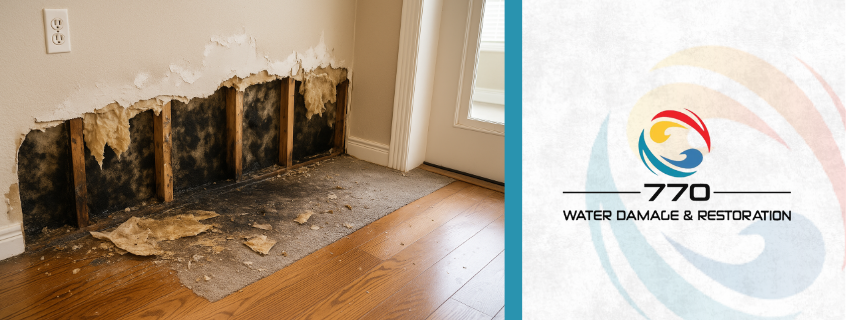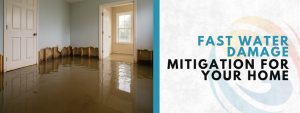
Have you ever walked into a room and caught a strange whiff—something earthy, musty, or just plain off? Then your eyes land on a blotch on the wall. It’s a little brown, maybe yellow, and looks like it’s been there forever. You think it’s nothing… but what if it’s something more?
Indoor odor wall stains often go unnoticed or get blamed on old paint or poor ventilation. But these marks can be more than a cosmetic issue. They might mean mold, moisture, smoke damage—or even fire hazards—are hiding inside your walls.
Let’s take a deep look at five common types of indoor odor wall stains, what causes them, and when you should worry.
Indoor Odor Wall Stains from Water Damage
How Water Damage Creates Odors and Stains
Picture a soft brown or yellow patch on the wall. Maybe it feels damp when you touch it, or maybe it just smells musty. These are classic signs of water damage, and one of the top sources of indoor odor wall stains.
Common causes:
- Leaking pipes inside walls
- Roof leaks or clogged gutters
- Flooding or overflow from upstairs bathrooms
As the moisture lingers, mold may grow behind the surface. That’s when the smell starts to stick around.
Warning Signs to Watch For
- Stains that grow or change color
- Wallpaper that bubbles or peels
- Earthy or musty odor in the air
- Allergies or breathing issues indoors
If you’re unsure whether you’re facing hidden moisture, this water damage checklist for your home can help you figure out where to start.
Indoor Odor Wall Stains Caused by Mold
Why Mold Smells—and How It Gets in Your Walls
Not all mold is visible, but when it is, you might see black or green spots spreading along baseboards, bathroom corners, or behind furniture. These indoor odor wall stains come with a strong, mildew-like odor.
Mold forms when moisture sticks around for too long, often from previous water damage, poor ventilation, or humid climates.
Mold-Related Health and Home Risks
- Respiratory symptoms like coughing or sneezing
- Headaches and fatigue indoors
- Long-term wall and insulation damage
- Spores that spread fast and harare d to remove
Mold doesn’t just sit on the surface—it creeps into drywall and wood. Cleaning it yourself can stir up spores and make it worse. To stay safe, many homeowners rely on trained professionals like those featured in this remediation support option.
Indoor Odor Wall Stains from Grease and Cooking Residue
When Kitchen Fumes Turn Into Wall Trouble
Let’s say you notice a faint sour or chemical smell in your kitchen. You scan the walls near the stove and find sticky, shiny blotches. These are grease-based indoor odor wall stains, common in homes with heavy cooking.
It’s not just gross; it can also be dangerous.
What to Look For
- Oily spots high up near the ceilings or around vents
- Yellow or gray discoloration
- Smell of old cooking oil that never goes away
Why it matters:
- Grease buildup is flammable
- It traps heat and clogs filters
- It can signal HVAC system issues
If left uncleaned, it could lead to fires or breakdowns in your ventilation system. A deep clean can help, but always check for more buildup inside ducts and filters.
Indoor Odor Wall Stains from Efflorescence
What’s That White Powdery Stuff on the Wall?
You head down to the basement and see a strange white dust crawling up from the bottom of the wall. It crumbles when you touch it and leaves a slight chalky feel behind.
That’s efflorescence—minerals left behind after water seeps through brick or concrete. It’s a subtle but real sign of indoor odor wall stains connected to long-term dampness.
Signs of Hidden Moisture
- White or gray dust or crust on the basement walls
- Paint bubbling or peeling near the floor
- Damp smell after heavy rain
Though not dangerous like mold, efflorescence tells you moisture is coming in—and over time, it can weaken your walls. You’ll want to fix the water source, not just clean the stain.
Indoor Odor Wall Stains from Smoke Residue
The Long Shadow of Smoke on Your Walls
Whether from smoking indoors, candle soot, or a past fire, smoke can stain walls in ways that last for years. These indoor odor wall stains usually look yellowish, gray, or dusty, and come with that familiar burnt or smoky scent.
Even if the fire was small or far away, the damage it leaves behind can seep deep into walls.
Where Smoke Stains Hide
- Ceiling corners and around light fixtures
- Near air vents and HVAC ducts
- Behind the curtains and wall décor
If you’ve had any smoke exposure in your home, cleaning may not be enough. Sealing and odor-blocking treatments are often needed. If this sounds familiar, check this restoration solution for smoke exposure to explore next steps.
Quick Reference: What That Stain Means
| Stain Appearance | Smell | Likely Cause | Risk |
| Brown/yellow patch | Musty | Water leak | Mold, wall damage |
| Black or fuzzy spot | Mildew | Mold growth | Health hazard |
| Sticky or oily blotch | Sour, rancid | Cooking residue | Fire risk |
| White chalky film | Damp | Efflorescence | Moisture intrusion |
| Yellow film | Smoky | Smoke damage | Structural staining |
Homeowner’s Survival Tips for Indoor Odor Wall Stains
Easy Actions You Can Take Today
- Trust Your Nose: Smell something odd? Track it down before ignoring it.
- Use a Flashlight: Angle it along walls to catch subtle discoloration.
- Feel the Texture: Damp or sticky walls can signal trouble.
- Check Problem Areas: Bathrooms, basements, kitchens, and laundry rooms.
- Monitor Allergies: Unusual symptoms indoors might mean hidden mold.
Description List: Matching Smell with Stain
- Musty + Patchy: Mold or water damage
- Greasy + Sour: Kitchen residue
- Powdery + Dry: Efflorescence
- Smoky + Yellow: Smoke or soot
- Wet + Paint Peeling: Foundation seepage
Final Thoughts: When to Worry About Indoor Odor Wall Stains
Some stains just look bad. Others whisper that your home is struggling behind the scenes. Learning how to spot and understand indoor odor wall stains could save you a fortune in repairs and safeguard your family’s health.
It’s not always easy to tell the difference between cosmetic and critical, but your nose and your eyes are powerful tools. Trust your gut. Take note of stains that come back, smells that linger, or walls that don’t feel quite right.
Whether it’s moisture, mold, or mystery gunk from the kitchen, don’t wait until things get worse. You have resources. You have help. And you don’t have to do it alone.
Frequently Asked Questions About Indoor Odor Wall Stains
How do I know if a wall stain is something serious or just cosmetic?
If the stain comes with a persistent smell, feels damp, or keeps returning after cleaning, it likely signals a deeper issue. Watch for signs like mold, discoloration growth, or musty air as red flags.
What causes my walls to smell even after I’ve cleaned the stains?
Odors often linger because the root problem—like hidden moisture, mold, or smoke residue—hasn’t been properly treated. Surface cleaning won’t eliminate smells trapped inside the wall materials.
Can indoor odor wall stains affect my health or my family’s well-being?
Yes, especially if the stains are linked to mold or smoke damage, which can cause respiratory issues, allergies, or worsen asthma. It’s best to address them early to maintain indoor air quality.
Is it safe to paint over indoor odor wall stains to cover them up?
Painting over stains without fixing the source only hides the problem temporarily. Moisture, mold, or smoke will usually resurface and may even worsen underneath the paint layer.
When should we call a professional to inspect indoor odor wall stains?
If the smell gets stronger, stains keep spreading, or someone in your home develops symptoms, it’s time to get expert help. Early inspection can prevent costly repairs and health risks.






